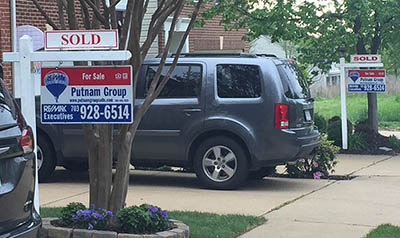
Redfin: Investors Bought Record 18% of 3Q Homes for Sale

Redfin, Seattle, said real estate investors bought a record 18.2% of the U.S. homes purchased during the third quarter, up from a revised 16.1% in the second quarter and 11.2% a year earlier.
The report said investors bought a record 90,215 homes in the third quarter, up 10.1% from the prior quarter and up 80.2% from a year earlier—the second-largest year-over-year gain on record. In dollar terms, investors bought a record $63.6 billion in homes in the third quarter, up from a revised $58.8 billion in the second quarter and $35.7 billion a year earlier. The typical home they purchased cost $438,770—5.3% higher than a year earlier amid an increase in housing prices. More than three-quarters (76.8%) of investor home purchases were paid for with all cash in the third quarter.

“Increasing home prices fueled by an intense housing shortage have created opportunities for investors to reap big profits,” said Redfin Senior Economist Sheharyar Bokhari. “Those same factors have pushed more Americans to rent, which also creates opportunities for investors because investors typically turn the homes they purchase into rentals and can now charge higher rents.”
Average monthly rents rose 10.7% year over year in September, the fastest growth in at least two years, while the median home sale price increased 13.9%.
“With cash-rich investors taking the housing market by storm, many individual homebuyers have found it tough to compete,” Bokhari said. “The good news for those buyers is that the housing market has started to cool. Bidding wars are on the decline, and if home-price growth continues to ease, we may see investors slow their roll.”
The report said single-family homes represented nearly three-fourths (74.4%) of investor purchases in the third quarter—the highest level on record. That’s up from 70.6% a year earlier. Meanwhile, condos/co-ops made up 16.9% of investor purchases, a record low and a decrease from 19.8% in the third quarter of 2020. Townhouses and multifamily housing represented 5.4% and 3.4% of investor purchases, respectively—little changed from a year earlier.
Redfin noted while low-priced homes still make up the lion’s share of investor purchases, their piece of the pie is shrinking. Low-priced homes represented 36.1% of investor purchases in the third quarter, a record low that’s down from 47% a year earlier. High-priced homes made up 30.8% of investor purchases, down slightly from 32.3% a year earlier.
Meanwhile, mid-priced homes represented a record one-third (33%) of investor purchases, up from 20.8% a year ago. This was the first quarter on record in which mid-priced homes represented a larger share of investor purchases than high-priced homes.
The report said nearly two-thirds (65.2%) of the homes investors bought in the third quarter had high heat risk, and a similar share (64.3%) had high storm risk. Meanwhile, 27.1% faced high drought risk, 22.2% had high flood risk, and 3% had high fire risk. These percentages don’t add up to 100% because it’s possible for homes to face more than one climate risk.
Investors were more likely than non-investors to purchase homes with high heat, drought and flood risk in the third quarter. Homes with high fire risk likely represent a relatively small portion of overall purchases because many areas that face high fire risk are rural and have very few homes, Bokhari said.
The report said investors had the highest share of purchases in Atlanta and Phoenix. In Atlanta, nearly one-third (32%) of homes that sold in the third quarter were purchased by investors—the highest share of the 40 U.S. metropolitan areas Redfin analyzed. Next came Phoenix (31.7%), Charlotte, N.C. (31.5%), Jacksonville, Fla. (28.3%) and Miami (28.1%).
Atlanta also saw the largest year-over-year gain, with investor market share rising to 32% in the third quarter from 12.9% a year earlier (+19.1 ppts). The second-biggest jump was in Charlotte (+18.2 ppts), followed by Phoenix (17.7 ppts), Jacksonville (+15.2 ppts) and Las Vegas (+14.6 ppts).
At the other end, Providence, R.I. had just 5.4% of homes that sold in the third quarter bought by investors, followed by Montgomery County, Pa. (7.1%), Virginia Beach, Va. (7.1%), Washington, D.C. (7.2%) and Warren, Mich. (7.4%). New York and San Jose were the only two metros that experienced year-over-year declines in market share, falling 0.6 and 0.4 percentage points, respectively.
